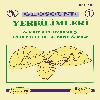Upgrading low-grade feldspar ores for use in the ceramic and glass industries by combination of froth flotation and magnetic separation methods
Düşük tenörlü feldspatların seramik ve cam endüstrisinde kullanılması için flotasyon ve manyetik ayırma yöntemi ile zenginleştirilmesi
___
- Abdel-Khalek, N.A., Yehia, A. & Ibrahim, S.S., 1994. Technical note: Beneficiation of Egyptian feldspar for application in the glass and ceramics industries, Mineral Engineering, Vol. 7, No. 9, p.1193-1201.
- Akar, A., 1994. Evaluation of Gördes-Köprübaşı district feldspar industrial raw material deposits, Progress in Mineral Processing Technology, Proceedings of -5th International Mineral Processing Symposium, p.243-249, Cappadocia- Turkey.
- Baarson, R.E., Ray, C.L. & Treweek, H.B., 1962. Plant practice in nonmetallic mineral flotation, Froth Flotation 50th Anniversary Vol., p.427-446, Published by AIME, New York.
- Bayraktar, İ., Er sayın, S. & Gülsoy, Ö. Y., 1997. Upgrading titanium bearing Na-feldspar by flotation using sulphonates, succinamate and saoaps of vegetable oils, Minerals Engineering, Vol. 1 No:12, p.1363-1374.
- Bolger, R., 1995. Feldspar & Nepheline Syenite "Turkish delight in export sales", Industrial Minerals, p.25, May.
- Bolin, N. J., 1983. A study of feldspar flotation, Erzmetall, 36 9,p . 427 - 432.
- Buckenham, M.H. & Rogers, J., 1954. Flotation of quartz and feldspar by dodecyl amine, Bull. Inst. Mining Met., 575, p.l 1-30.
- Çelik, M. S., Can, I & Eren, R. H., 1998. Removal of titanium impurities from feldspar ores by new flotation collectors, Minerals Engineering, Vol. 11 No:1, p.1201-1208.
- Çuhadaroğlu, D., Okur, E. & Toroğlu, İ., 1992. Karacaören (Simav) alkali feldspatlarının zenginleştirilme olanaklarının araştırılması, 4th International Mineral Processing Symposium, V.2, p.665-675, 20-22 October, Antalya-Turkey.
- Deer, W.A., Howie, R.A.& Zussmann, J., 1985. An introduction to the rock-forming mineral, p.285-327.
- Dietrich, R.V. & Skinner, B.C., 1979. Rock and rock minerals, p.27-43, New York.
- El Salmawy, M.S., Nakahiro, Y., Wakamatsu, T., 1993. "Activation of quartz and feldspar with metal ions in flotation, Minerals Engineering, 6(12), p 1231-1243.
- Geredeli, A. & Özbayoğlu, G., 1995. Simav feldspatının flotasyonu, Endüstriyel Hammaddeler Sempozyumu, Köse & Kızıl (eds), s.71-81, 21-22 Nisan, İzmir-Türkiye.
- Ghiani, M., Şerci, A., Per etti, R. &. Zucca; A., (1995) - Beneficiation of feldspar ores for the ceramic industry, 14th Mining Congress of Turkey, p. 405-412, Ankara, Turkey.
- Gökalp, T. & Ulu, E., 1993. Bursa-Orhaneli- Yeşiller Siyenitlerinin Laboratuvar Ölçekli Zenginleştirme Çalışmaları, Türkiye 13. Madencilik Kongresi, s.683-694, Istanbul-Türkiye.
- Gülsoy, Ö.Y. & Kılavuz, Ş.F., 2002. Potasyum feldspat kuvars flotasyonunda toplayıcı olarak metal tuzları ile birlikte Na-oleat kullanımı, Madencilik Dergisi, ISSN-.0024-9416, TMMOB Maden Mühendisleri Odası, cilt.41, sayı.l, s.22-34.
- Katajanagy, T., 1973. Ceramics Japan, 8(1), pp 58-61.
- Kendal, T., 1993. Turkey's industrial minerals, Industrial Minerals, p. 66-67, Nov.
- Malghan, S. G., 1981, Effect of process variables in feldspar flotation using non-HF system, Minerals Engineering, 33 (11), p. 1616 -1623.
- Matieu, G.I. & Sirois, L.L., 1984. In: Reagents in the minerals industry; The Institution of Mining and Metallurgy; Edited by M.J. Jones and R. Oblatt; p 57 -67.
- Mining Chemical Handbook, 1986. American Cyanamid Company, U.S.A.
- Ney, P., 1973. Zeta potentiale und flotierbarkeit von mineralen, Springer-Verlag Wien, 121-177, New York.
- Özkan, Ş.G., Kurşun, İ. & İpekoğlu, B., 2001. Trakya Bölgesi kuvars kumlarından feldspat uzaklaştırılması için yeni bir flotasyon yaklaşımı, 4. Endüstriyel Hammaddeler Sempozyumu, izmir, s.278-282.
- Potter, M.J., 1980. Feldspar, Mineral facts and problem, United States Department of the Interior Bureau of Mines Bulletin 671, New York.
- Pryor, E.J., 1965. Mineral Processing, p.704-705, Elsevier, Amsterdam-London-New York.
- Redeker, I. H., 1977. Flotation of feldspar, spodumene, quartz and mica from pegmatites in North Carolina, Erzmetall, band 30, heft 12, p.566-571, Deutschland.
- Rogers, C.P.&Neal, J.P., 1983. Industrial mineral and rocks, 5th Ed., V.l, AIME, NewYork.
- Shimoiizaka, J. & Nakatsuka, K., 1978. The Technology Reports of the Tohoku University, 43(1) p. 137 - 149.
- Smith, R.W., 1965. Activation beryl and feldspar by fluorides in cationic flotation system, Trans. Soc. Min. Eng. AIME, 232, p.106-108
- Sümer, G. & Kaya, M., 1995. Aydın-Çine feldspatlarının flatosyon ile zenginleştirilmesi,endüstriyel hammaddeler sempozyumu, Köse & Kızıl (edsj, s.59-69, İzmir.
- Uhlig, D., 1988. the influence of mechanical pretreatment and chemical conditioning on the flotation feldspar from rocks of different paragenesis, XVI International Mineral Processing Congress, Elsevier Science Publishers B.V., p.1607-1618, Amsterdam.
- Ütine, T., 1987. Köpüklü yüzdürme ile feldspat kuvars ayırımında yüzey kimyası, Madencilik Dergisi, cilt XXVI, sayı.4, s.7-9.
- ISSN: 1019-1003
- Yayın Aralığı: 1
- Başlangıç: 1986
- Yayıncı: Çukurova Üniversitesi Jeoloji Mühendisliği Bölümü
Ortakonuş (Anamur-Mersin) kurşun-çinko cevherleşmelerinin mineralojisi ve jeokimyasal özellikleri
Alibeyköy Çiftliği (Yayladağı-Antakya) yamaç hareketi ve iyileştirme çalışmaları
Hidayet TAGA, İsmail DİNÇER, Altay ACAR
Maşatdağı (Alanya-Antalya) diyasporitik boksitlerinin stratigrafik konumu
Fetullah ARIK, Alican ÖZTÜRK, Gürsel KANSUN, Muzaffer KARADAĞ, Sedat TEMUR
Çaybağı havzası mineralojik verilerinin istatistiksel yöntemlerle değerlendirilmesi
Ahmet SAĞIROĞLU, Dicle Bal AKKOCA
Üçkapılı Granotoidlerinin agrega olabilme özelliği açısından değerlendirilmesi
Yeşilova ofiyolitine ait bazaltların (Burdur-GB Türkiye) petrografik ve jeokimyasal özellikleri
Derince (Elazığ) masif sülfid cevherleşmesine ait piritlerin iz element içerikleri
Cemal BÖLÜCEK, Muharrem AKGÜL, Sedat TEMUR
Orta-Batı Toroslardaki Mesozoik volkaniklerinin jeokimyasal özellikleri
Gürsel KANSUN, Kerim KOÇAK, Halil BAŞ, Fuat IŞIK
Karaisalı kireçtaşı Gözne resifinin (Gözne-Mersin) sedimantolojik özellikleri
